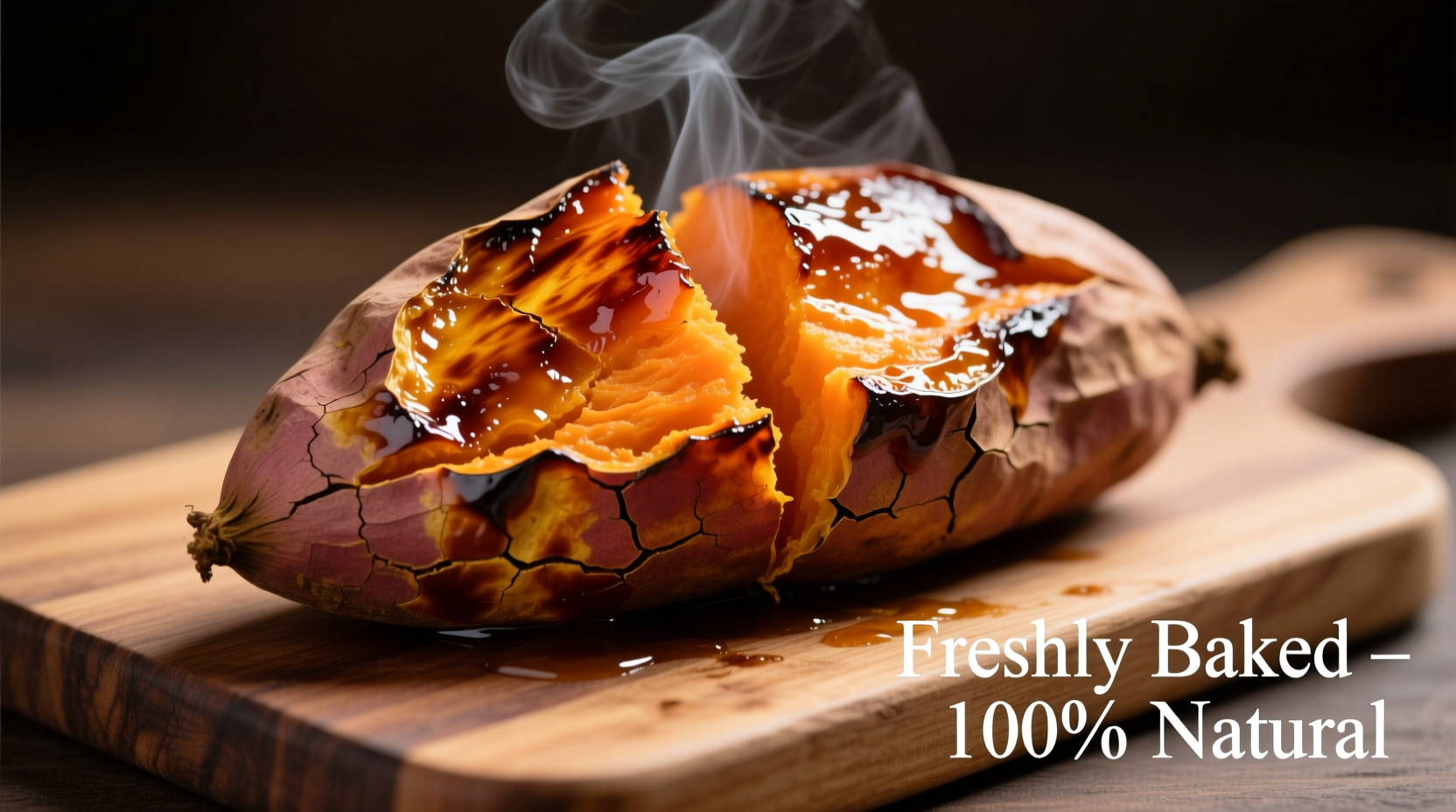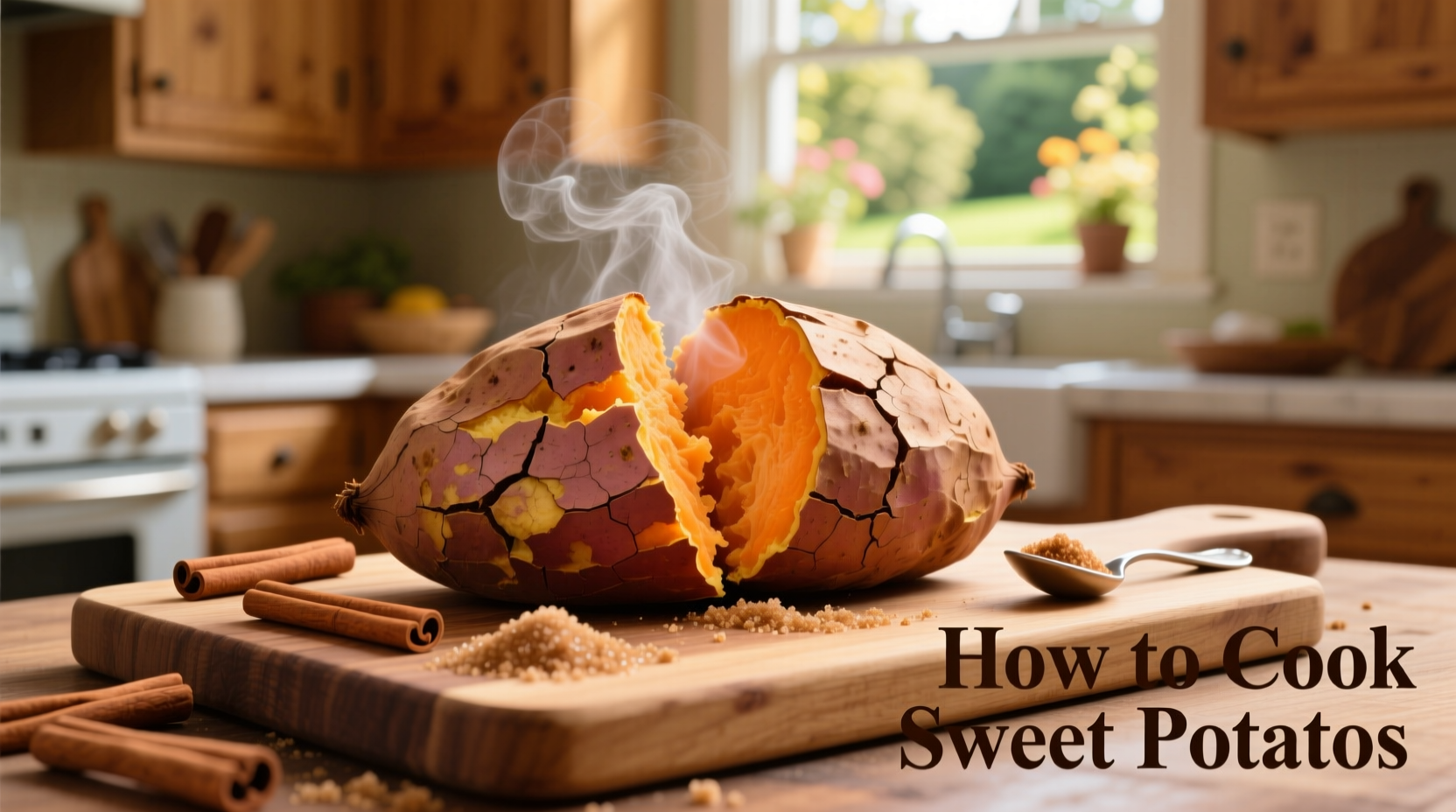The best way to cook sweet potatoes depends on your desired texture and time constraints. For perfectly caramelized, creamy sweet potatoes with minimal effort, bake them at 400°F (200°C) for 45-60 minutes until fork-tender. This method preserves nutrients while enhancing natural sweetness through caramelization. You'll learn multiple cooking techniques, flavor pairings, and pro tips to achieve restaurant-quality results every time—no special equipment required.
Discover the science-backed methods that transform humble sweet potatoes into culinary masterpieces. Whether you're meal prepping, craving a quick side dish, or experimenting with global flavors, this guide covers everything from selecting the perfect tubers to achieving that ideal balance of crispy exterior and velvety interior.
Understanding Sweet Potato Varieties and Selection
Sweet potatoes come in several varieties, each with distinct cooking properties. The common orange-fleshed 'Beauregard' (most widely available) offers balanced sweetness perfect for baking and roasting. Purple-fleshed varieties like 'Okinawan' maintain their vibrant color when steamed but can turn gray in acidic preparations. White-fleshed 'Hannah' types have a milder flavor ideal for savory applications.
When selecting sweet potatoes, choose firm specimens without soft spots or cracks. USDA agricultural specialists recommend avoiding refrigeration, as cold temperatures convert starches to sugars unevenly. Instead, store them in a cool, dark pantry for up to 3 weeks—this maintains optimal texture for cooking.
Essential Preparation Techniques
Proper preparation sets the stage for perfect results. Contrary to popular belief, peeling isn't always necessary—the skin contains double the fiber of the flesh and adds texture. Simply scrub thoroughly with a vegetable brush. For even cooking, cut uniform 1-inch cubes or slice lengthwise for baking.
| Cooking Method | Prep Time | Cook Time | Best For |
|---|---|---|---|
| Oven Roasting | 10 min | 45-60 min | Caramelized edges, meal prep |
| Boiling | 15 min | 20-25 min | Mashed applications, quick cooking |
| Air Frying | 10 min | 25-30 min | Crispy texture, small batches |
| Steaming | 5 min | 30-40 min | Nutrient preservation, delicate texture |
Mastering the Oven Roasting Method
For the classic preparation that maximizes flavor development, oven roasting reigns supreme. Preheat to 400°F (200°C)—this temperature triggers caramelization of natural sugars without burning. Prick whole potatoes with a fork to prevent steam explosions. For even cooking, arrange on a parchment-lined baking sheet with space between each.
Timing varies by size: 5-6 inch potatoes need 45-55 minutes, while larger specimens may require 60-75 minutes. The USDA Food Safety and Inspection Service confirms sweet potatoes are done when they reach 205°F (96°C) internally and yield to gentle pressure. For extra-crispy skin, rub with 1 tsp oil before baking.

Alternative Cooking Methods for Busy Cooks
When time is limited, the microwave offers a surprisingly effective solution. Pierce potatoes, microwave on high for 5 minutes per potato, then flip and continue for another 3-5 minutes. This method retains more water-soluble vitamins than boiling, according to Cornell University's food science research.
For meal prep enthusiasts, the 'steam-then-roast' technique delivers consistent results. Boil cubed potatoes for 10 minutes until slightly tender, then toss with oil and roast at 425°F (220°C) for 20 minutes. This hybrid approach prevents the common issue of burnt exteriors with undercooked centers.
Flavor Pairing Science
Elevate your sweet potatoes with flavor combinations backed by culinary chemistry. The natural sweetness pairs beautifully with:
- Savory accents: Crispy bacon, smoked paprika, or fresh herbs like rosemary
- Acidic elements: Lime juice or apple cider vinegar to balance sweetness
- Warm spices: Cinnamon and nutmeg enhance natural sugars through aroma synergy
For authentic global flavors, try Maya Gonzalez's Latin American technique: toss roasted cubes with epazote and achiote oil. The earthy herb and annatto seeds create complex flavor layers that complement sweet potatoes' natural profile.
Storage and Reheating Best Practices
Proper storage maintains texture and safety. Cooked sweet potatoes keep for 5 days in airtight containers in the refrigerator. For longer storage, freeze cubed portions for up to 6 months. When reheating, the oven (350°F for 15-20 minutes) preserves texture better than microwaving, which can make them soggy.
Agricultural extension specialists warn against leaving cooked sweet potatoes at room temperature for more than 2 hours. The moist environment encourages bacterial growth, particularly in sweet potato dishes containing dairy or eggs.
Troubleshooting Common Issues
Problem: Uneven cooking
Solution: Cut uniform pieces and rotate the baking sheet halfway through cooking. For whole potatoes, place cut-side down on the baking sheet.
Problem: Soggy texture
Solution: Increase oven temperature to 425°F and reduce moisture by patting potatoes dry before oiling. Avoid overcrowding the baking sheet.
Problem: Bitter aftertaste
Solution: This indicates improper storage. Discard potatoes showing dark spots or off-odors, as recommended by food safety guidelines.
Maximizing Nutritional Benefits
Sweet potatoes rank among the top vegetable sources of beta-carotene, which converts to vitamin A in the body. To maximize absorption, pair with healthy fats like olive oil or avocado—the USDA confirms fat-soluble vitamins require lipids for optimal uptake. Steaming preserves 92% of beta-carotene compared to 73% in boiling, per Journal of Agricultural and Food Chemistry research.
FAQs About Cooking Sweet Potatoes
Below are answers to frequently asked questions about preparing this versatile vegetable.











 浙公网安备
33010002000092号
浙公网安备
33010002000092号 浙B2-20120091-4
浙B2-20120091-4